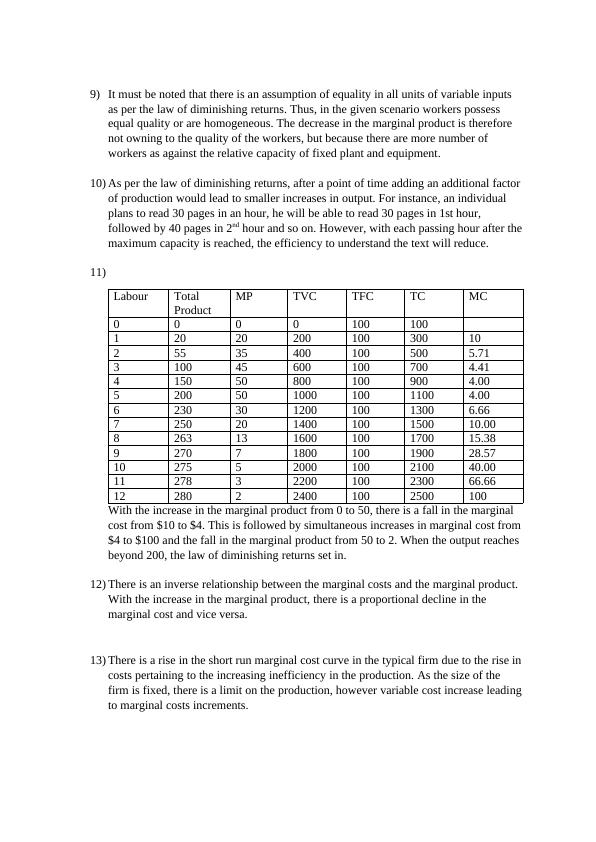Importance of Costs in Economics
5 Pages1544 Words88 Views
Added on 2022-12-21
About This Document
This article discusses the importance of costs in economics and how they reflect market prices of resources. It explains the concept of economic profits and losses and debunks the misconception that a business will shut down if economic profits are zero. It also explores the differences between short run and long run production functions and the law of diminishing returns. Additionally, it examines the relationship between marginal product and marginal cost, and the different market structures in economics.
Importance of Costs in Economics
Added on 2022-12-21
ShareRelated Documents
End of preview
Want to access all the pages? Upload your documents or become a member.
Production and Cost Minimizing Output
|6
|935
|16
Microeconomics and Macroeconomics docx.
|8
|1221
|17
Relationship between Short Run Cost and Equilibrium in Perfect Competition and Monopoly
|11
|2994
|1
Microeconomics Assignment 2022
|9
|936
|30
Principles of Microeconomic
|10
|1430
|22
Managerial Economics and Organizational
|4
|656
|17


